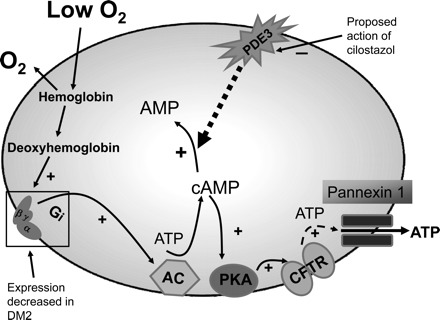Fig. 5.

Proposed model of the mechanism by which cilostazol increases cAMP accumulation and ATP release from type 2 diabetes erythrocytes. Exposure of healthy human erythrocytes to reduced extracellular oxygen (O2) tension results in release of O2 from hemoglobin (desaturation) and activation of a signaling pathway for ATP release. This pathway requires an increase in cAMP that is regulated by PDE3 activity. The conduit for ATP release is pannexin 1 (33). In erythrocytes of humans with type 2 diabetes, expression of Gi and ATP release in response to exposure to reduced O2 are decreased. Cilostazol, by inhibiting the degradation of cAMP in this pathway, enhances low O2-induced ATP release. AC, adenylyl cyclase; CFTR, cystic fibrosis transmembrane conductance regulator; (+)activation; (−)inhibition.
